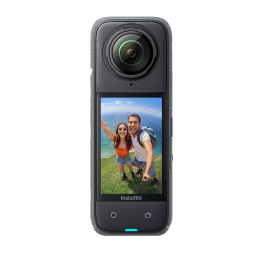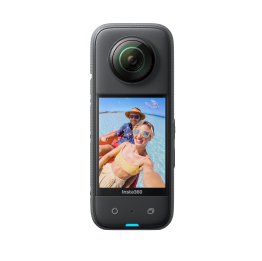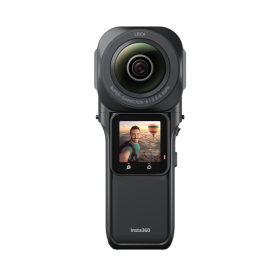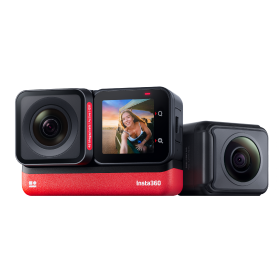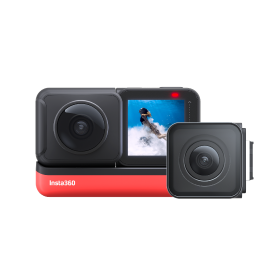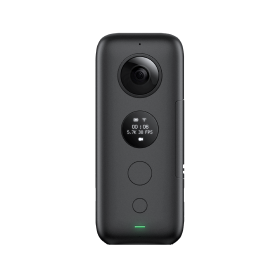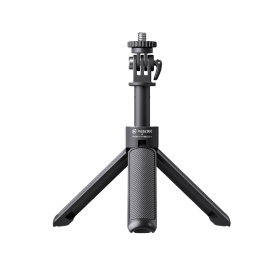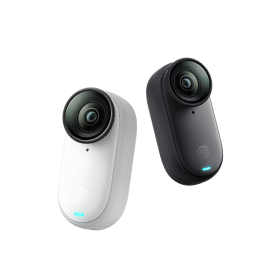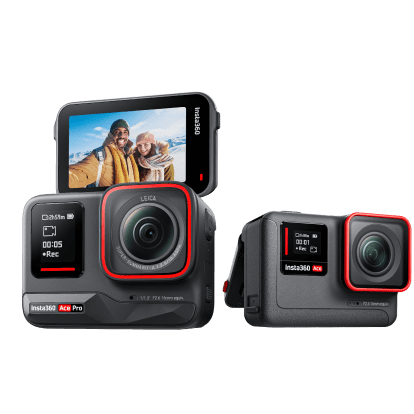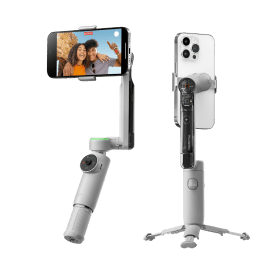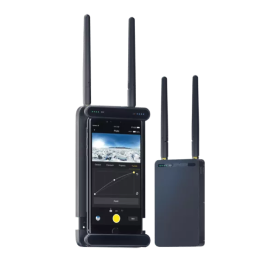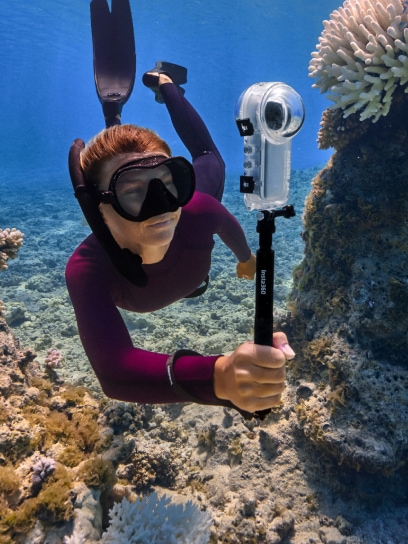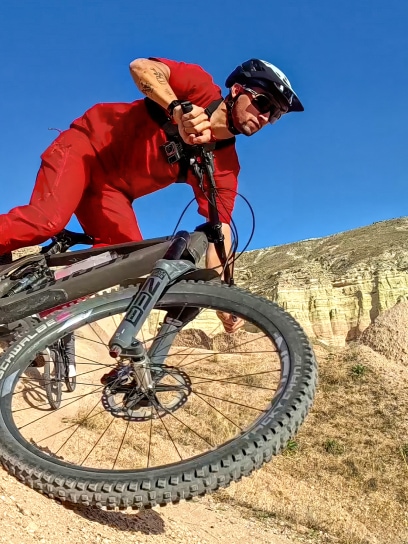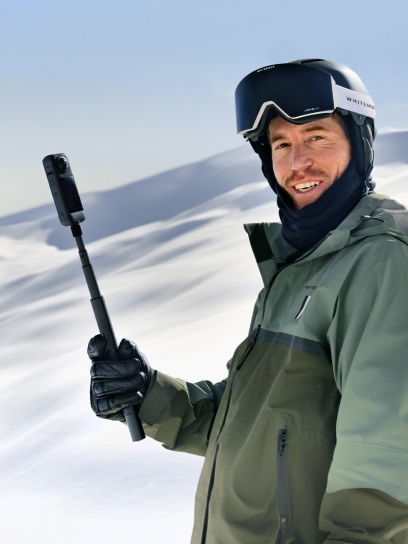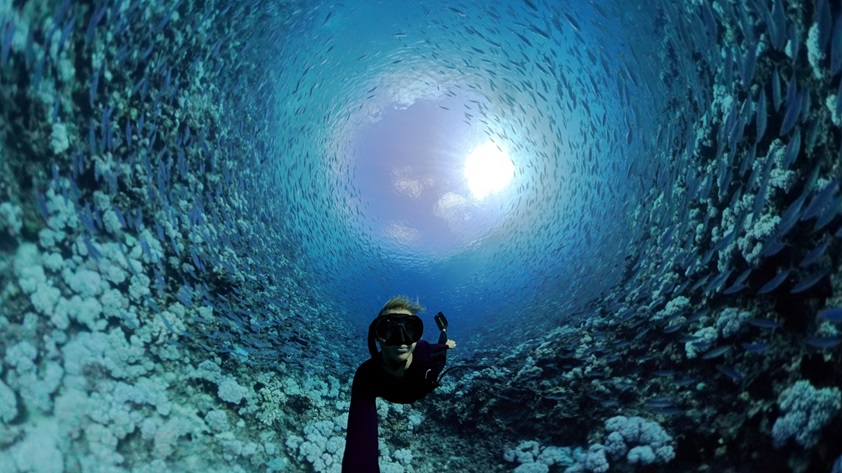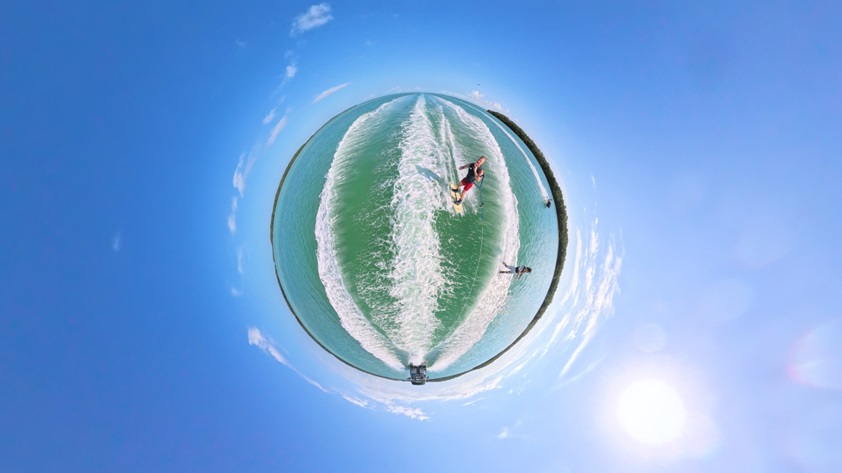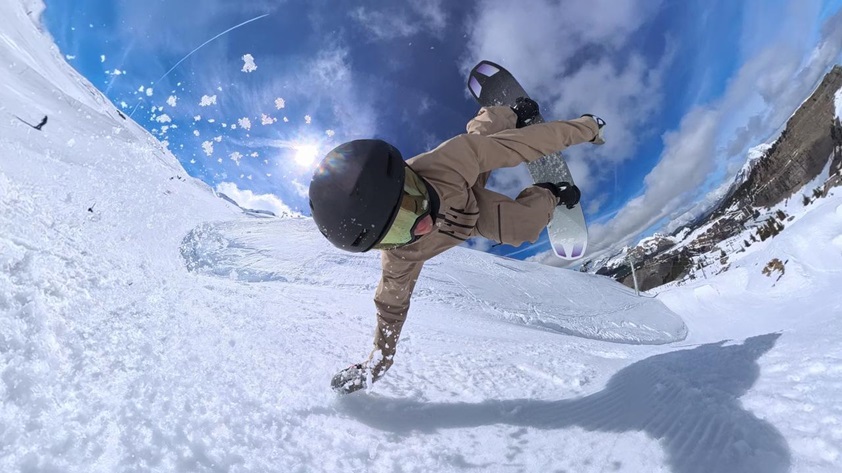Planning an underwater adventure and want to capture every incredible moment? Whether you're diving into the deep blue or just snorkeling in the shallows, having the right camera can make all the difference. The best camera for underwater photography is your ticket to transforming those underwater experiences into stunning visuals.
Underwater photography is all about capturing the hidden beauty of the ocean. From the vibrant colors of coral reefs to the mysterious depths where light barely reaches, having the best camera for underwater photography ensures that every shot is as breathtaking as the moment itself. But not all cameras are up to the challenge. You need something waterproof and designed to handle the unique demands of shooting underwater.
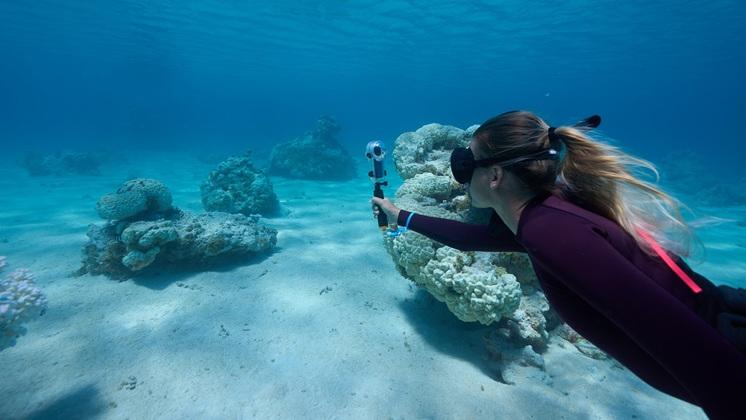
What is Underwater Photography?
Underwater photography presents a unique challenge compared to shooting on land. Light behaves differently, colors fade, and everything is constantly moving. But that's what makes it so thrilling—it's like exploring a hidden world that most people never see. From vibrant fish to eerie shipwrecks, there's much to capture beneath the surface.
However, water can distort light and dull colors, making it tough to get bright, clear shots. Keeping your camera steady while swimming adds to the challenge. That's why having the best camera for underwater photography is crucial. They're built to handle these conditions, ensuring your photos and videos are vibrant, sharp, and full of life.
Essential Features for Underwater Photography Cameras
If you're serious about capturing the best underwater photos, you need a camera that excels. Here's what to look for:
Waterproofing
This one's obvious—your camera must be waterproof. But it's not just about surviving a splash; it's about how deep you can go. A quality underwater camera should handle at least 33ft (10m) with ease. For deeper dives, make sure it has some sort of case to withstand higher pressures. Waterproofing also means sealing the camera tightly against water, dust, and other elements. Look for high waterproof ratings and durable designs to ensure your camera survives both the depths and the rigors of underwater adventures.
Low Light Performance
The deeper you dive, the less light you have. That's why low light performance is crucial. A good sensor and a high ISO range are essential to capture bright, clear images when natural light fades. Strong low light capabilities allow you to preserve vibrant colors and fine details, even in darker environments like deep waters or caves. The best camera for underwater photography should effortlessly handle these conditions, delivering sharp and vivid images.
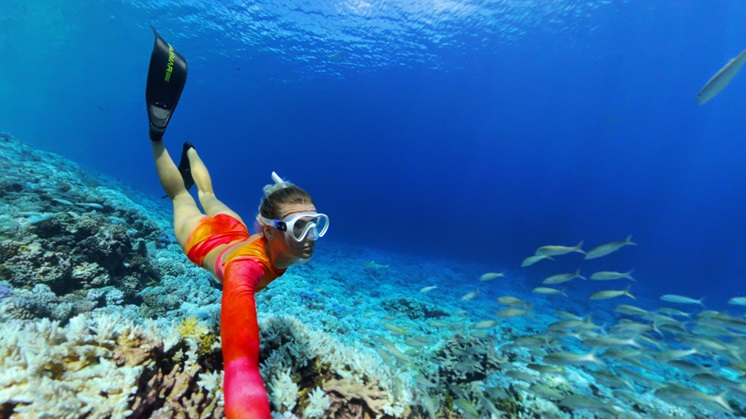
Resolution and Image Quality
Underwater photography is all about detail. Whether capturing the intricate textures of coral or the swift movement of fish, your camera needs high resolution for stunning clarity. But resolution isn't just about megapixels—you also need excellent image stabilization. Everything's in motion underwater—your subject, the water, and even you. Stabilization keeps your shots steady and reduces blurriness, ensuring crisp footage in dynamic underwater scenes.
Accessories
The best cameras should support a range of accessories, helping you get the most out of your underwater shoots. A good waterproof case can improve how deep your camera can dive, while color-correcting filters restore the reds and yellows that fade for truly vibrant footage. A sturdy grip helps keep your camera steady, preventing it from drifting away or sinking. These extras can turn a good shot into a great one.
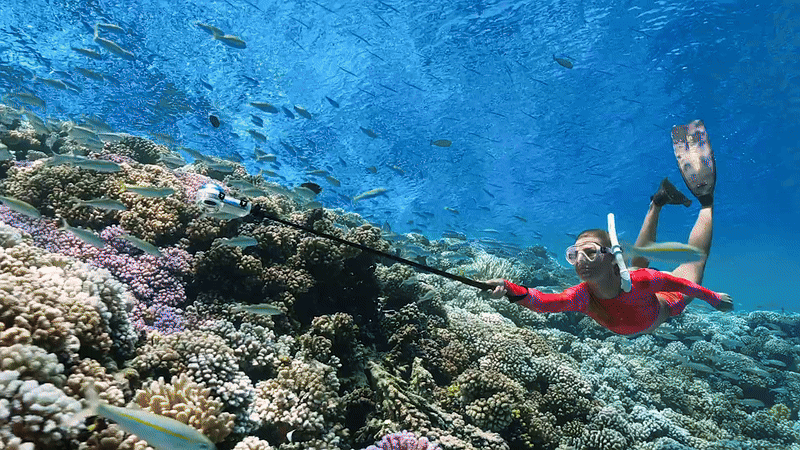
Top Underwater Photography Cameras in 2024
When it comes to choosing the best camera for underwater photography, Insta360 Ace Pro and X4 are the top contenders. Here's why these cameras stand out:
Insta360 X4

- Waterproofing: Waterproof up to 33ft (10m) without a dive case, and up to 164ft (50m) with the Insta360 X4 Invisible Dive Case.
- Resolution: Records 8K30fps or 5.7K60fps 360º footage, with a Single Lens Mode at 4K60fps for smooth shots.
- 360º Footage: Captures immersive 360º footage, allowing you to document every angle of your underwater adventures. Then, reframe when you're back on land to get any angle you want.
- FlowState Stabilization: Ensures smooth and steady shots, even in dynamic underwater environments.
Accessories:
- Insta360 X4 Invisible Dive Case: Waterproof to 164ft (50m), this case has a complete invisible design, perfect for seamless 360º shots underwater.
Insta360 Ace Pro
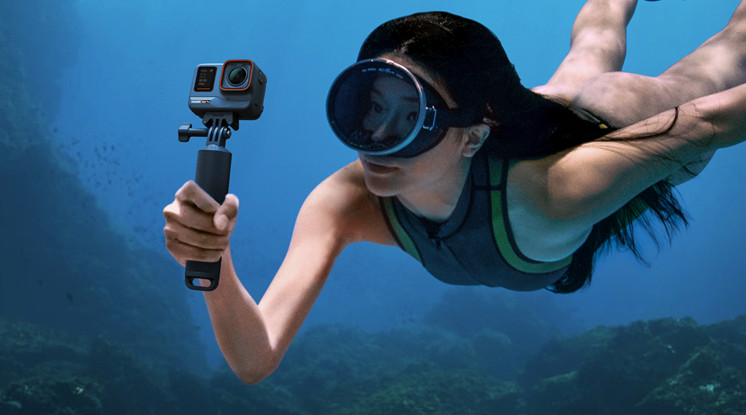
- Waterproofing: Waterproof up to 33ft (10m) out of the box and 197ft (60m) with the Insta360 Ace Pro Dive Case.
- Low Light Performance: Specialized PureShot Mode reduces noise and preserves details in extreme low light conditions.
- Leica SUMMARIT Lens: Equipped with a premium Leica lens and a 1/1.3" sensor, offering unmatched clarity, sharpness, and color accuracy for superior image quality.
- FlowState Stabilization: Keeps your shots smooth and stable, no matter how rough the waves.
Accessories:
- Insta360 Ace Pro Dive Case: Waterproof to 197ft (60m), with a glass lens for better image quality.
- Insta360 Ace Pro ND Filter Set: Easily create cinematic atmosphere and motion blur effects with ND8, ND16, ND32, and PL filters.
Take Your Underwater Photography Further
Pair Insta360 Ace Pro or X4 with the Floating Hand Grip for completely protection underwater. This non-slip grip keeps the camera afloat and easy to handle, so you can enjoy your dive without worrying about losing it. Plus, each camera comes with a tailored diving bundle—like the Invisible Dive Bundle for X4 and the Splash Bundle for Insta360 Ace Pro. Both are packed with all the accessories you need to capture perfect underwater shots.
How to Shoot Underwater
Now that you've got the best camera for underwater photography, here's how to use it like a pro:
Practice your Balance
Try to keep yourself stable underwater for those sharp, clear shots. If you're floating around too much, your photos will become blurry. Slow, steady movements are the way to go.
Stability
Water currents and hand movements can cause unwanted shakes, but using a grip or selfie stick helps keep your camera steady.
Lighting Considerations
Good lighting is everything when it comes to underwater photography. The best time to shoot is early morning or around noon. For deeper dives, external lights or filters can help you capture the vibrant colors and clear details that make your photos stand out.
Stabilization Settings
Make sure your camera's stabilization is turned on. This will help you get smooth, steady footage, even when the water is moving.
Resolution and Frame Rate
For high-quality footage, shoot at 5.7K30fps. This setting gives you a great balance between resolution and frame rate, ensuring your underwater scenes are captured in stunning detail.
White Balance
Water often adds a blue or green tint to your shots, so adjusting the white balance is key. Play around with different settings to find what works best for the depth and clarity of the water you're in.
Exposure and ISO
Set your exposure lower in bright conditions to avoid overexposure. For low light environments, increase your ISO, but be careful—too much can introduce noise into your images.
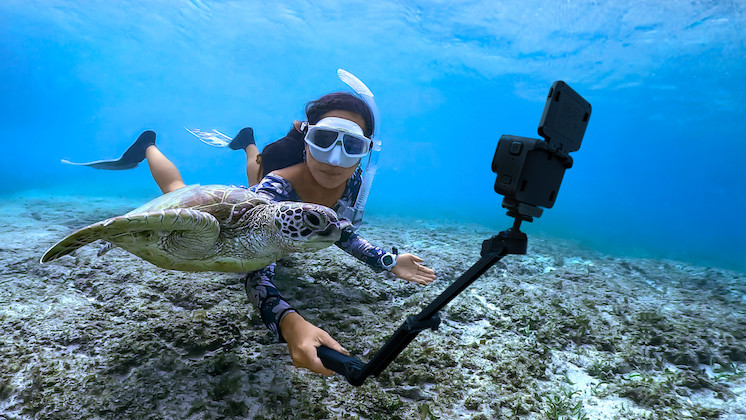
Why Insta360?
When it comes to the best camera for underwater photography, Insta360 Ace Pro and X4 are undoubtedly the top picks. X4 shines with its immersive 360º footage, perfect for capturing every angle during your dives. Insta360 Ace Pro delivers unparalleled visuals with its low light performance, offering unmatched clarity and color for those seeking top-tier image quality, especially at greater depths. Both cameras feature AquaVision in the Insta360 app, allowing for quick, one-tap color correction to bring your underwater footage to life. With FlowState Stabilization for smooth footage, these cameras are ideal for everyone, from seasoned divers to casual snorkelers.
Keen to keep up to date on Insta360 stories? Keep an eye on our blog and sign up for our mailing list.
